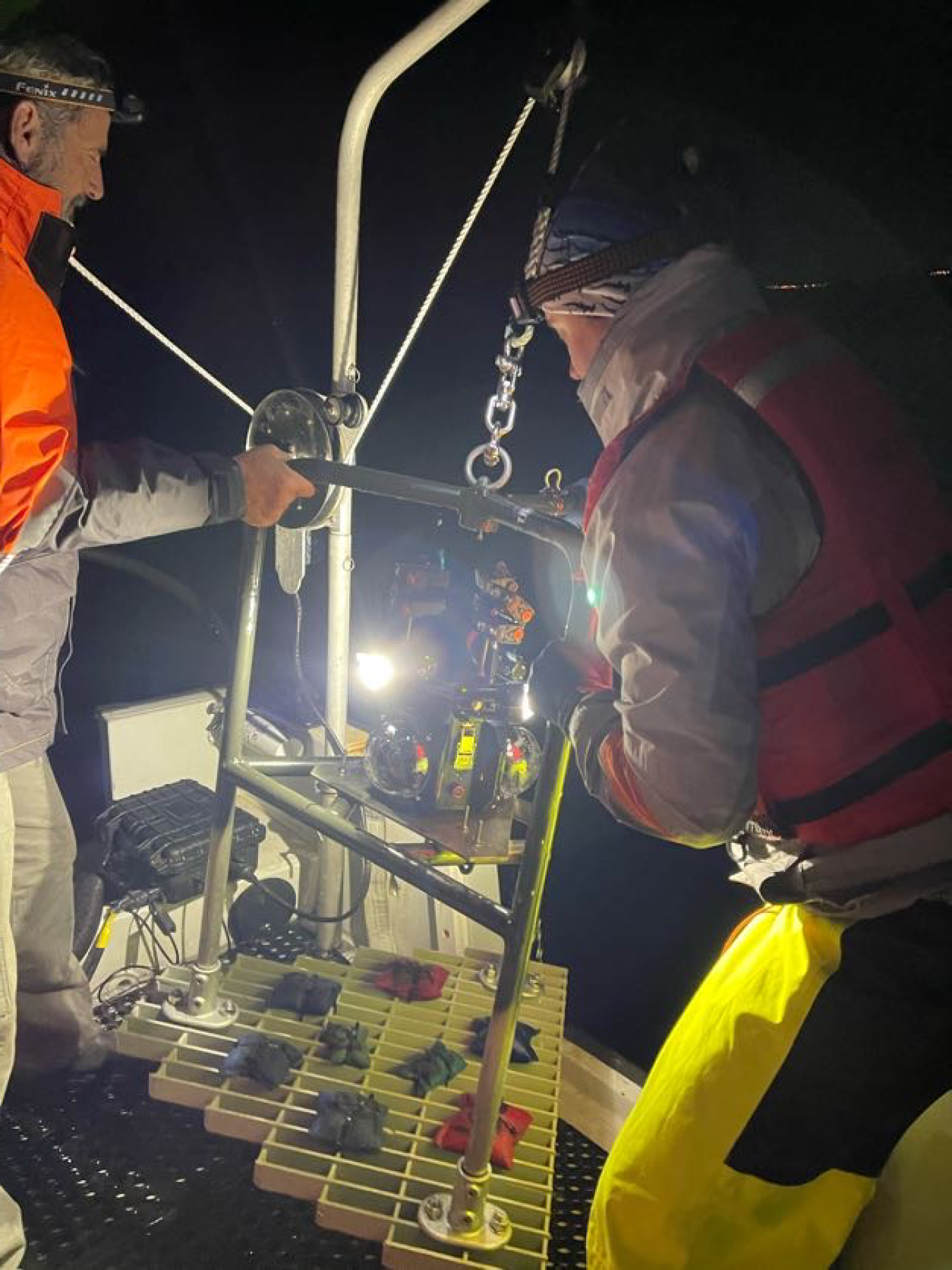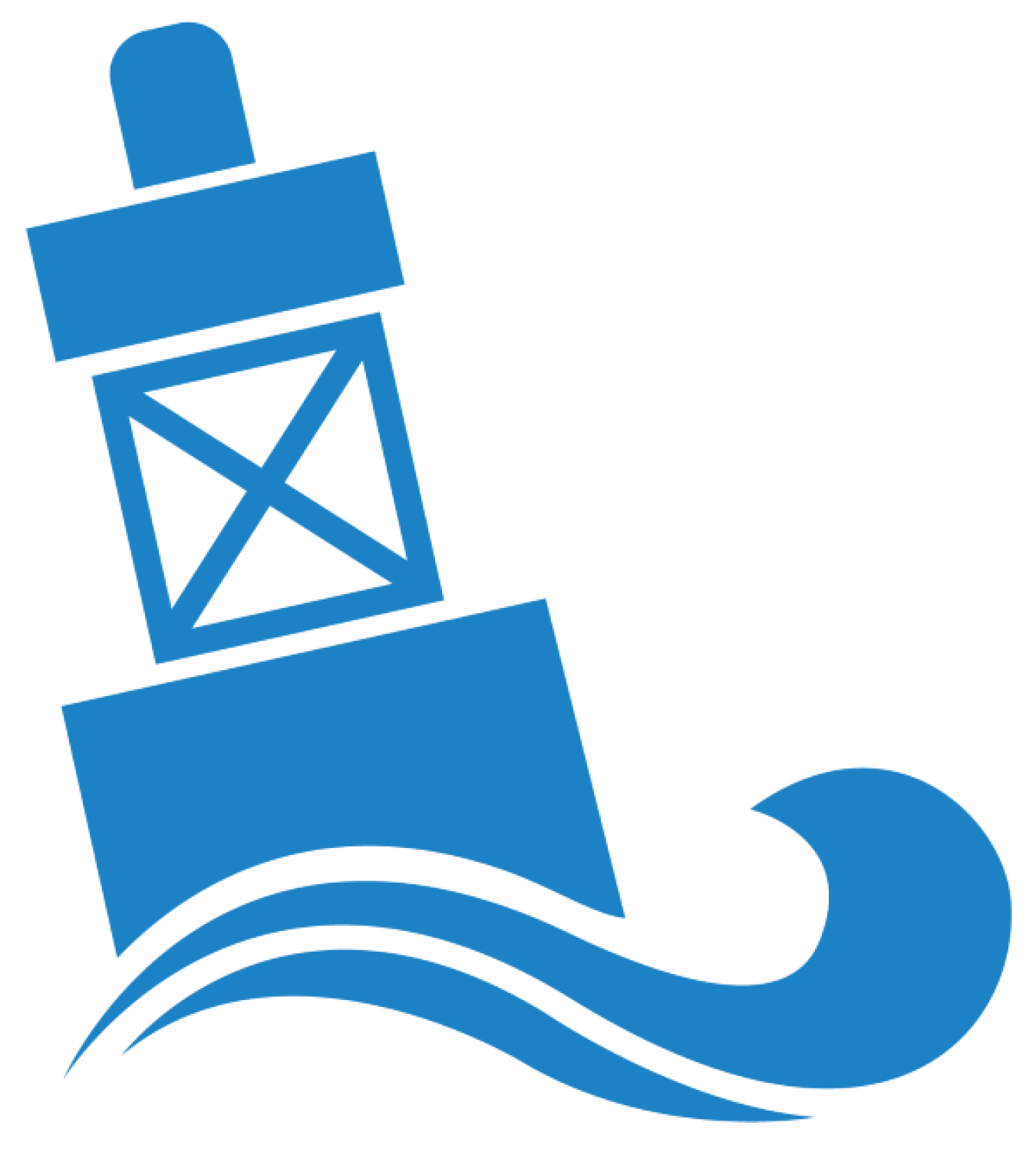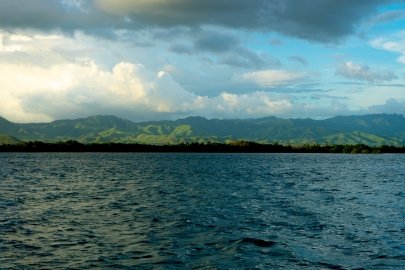Triton team completes tests to inform recommendations for cost-effective, off-the-shelf technologies and methods for environmental monitoring at marine energy sites.
Water Power Technologies Office
March 9, 2022Marine Energy Program
Reducing Barriers to Testing
Project Name: The Triton Initiative
Project Team: Pacific Northwest National Laboratory (lead), University of New Hampshire, University of Alaska, and Scripps Institution of Oceanography at the University of California San Diego
Lead Recipient Location: Sequim, Washington

The Triton Initiative—led by Pacific Northwest National Laboratory and supported by the University of New Hampshire, University of Alaska, and Scripps Institution of Oceanography at the University of California San Diego—made significant advancements researching technologies used to measure four key environmental stressors—electromagnetic fields, collision risk, underwater noise, and changes in habitat—associated with marine energy devices. This research will be featured in a special issue of the peer-reviewed Journal of Marine Science and Engineering in early 2022.
Triton tested underwater acoustic camera technology to evaluate fish interactions around deployed marine energy devices in Alaska and New Hampshire. Information from these tests helped to fill data gaps related to the use of acoustic cameras to detect fish behavior around tidal and current energy devices. The team also used hydrophones, 360-degree video cameras, and magnetometers, which aided the development of recommendations to monitor for underwater noise, changes in habitat, and electromagnetic field research, respectively.

Pacific Northwest National Laboratory tested the impacts of marine energy devices on the ecosystem by deploying a 360-degree optical video camera in the water near the CalWave wave energy converter off the Scripps Institution of Oceanography’s pier in La Jolla, California. Photo courtesy of Pacific Northwest National Laboratory and Scripps Institution of Oceanography
The results from these tests were valuable in providing a use case and recommendations for cost-effective, off-the-shelf technologies and methods for environmental monitoring at marine energy sites. For instance, a 360-degree camera, drifting hydrophone, acoustic camera, and a towed magnetometer were tested and evaluated for performance in monitoring environmental stressors for changes in habitat, underwater noise, collision risk, and electromagnetic fields, respectively. The recommendations from this work demonstrate the technology effectiveness for site-specific conditions and each stressor. A drifting hydrophone is an effective technology approach for monitoring underwater noise in a tidal channel. Likewise, a towed magnetometer effectively measures magnetic fields from powered cables on the seafloor.
The Triton Initiative was approved to move onto the third phase of the project, which will take place over the next three years. Reaching this phase opens the door to research biological receptor responses to physical stressors related to marine energy devices. This new research will help improve understanding of interactions between marine wildlife and marine energy devices using above and underwater technologies. Efforts will also focus on developing improvements in data analysis and processing with machine learning. This data is necessary for regulators, marine energy stakeholders, and developers to make permitting decisions, and the development of cost-effective technologies and methods supports compliance with permitting requirements.
WPTO's Marine Energy e-newsletter shares news and updates on tools, analysis, and emerging technologies to advance marine energy.
The WPTO e-newsletter brings funding opportunities, events, publications, hydropower, and marine energy updates directly to your inbox.







